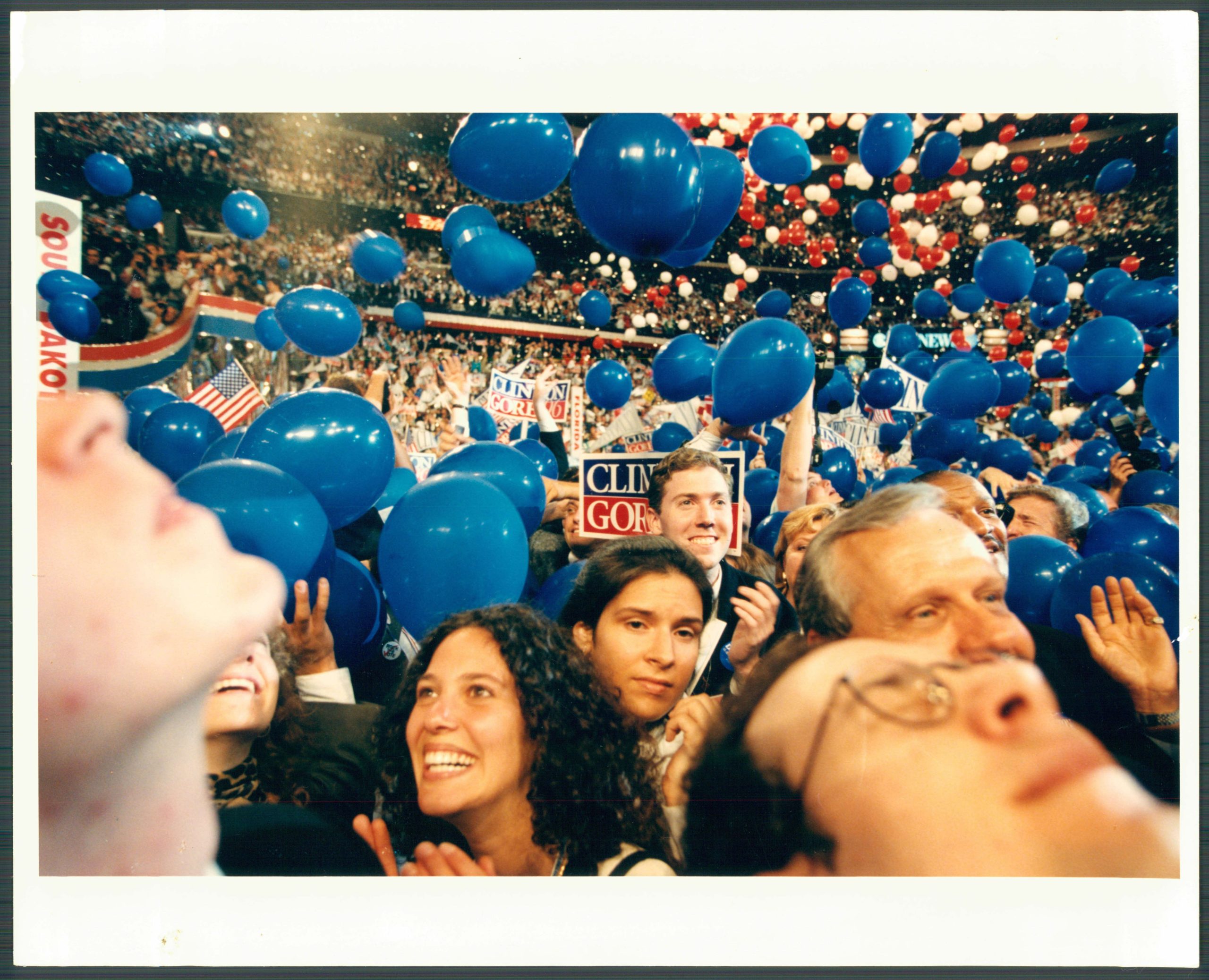It’s been 25 years since Chicago last hosted a national political convention. In 1996, the Democrats gathered in the United Center to nominate Bill Clinton for a second term as president. Clinton’s campaign against the elderly Bob Dole was the least dramatic, least controversial election of modern times, and thus perfect for making the whole world forget about how Chicago had handled its previous Democratic National Convention — in 1968. Mayor Richard M. Daley, who was trying to use the convention to showcase Chicago’s emergence as a global city, went on a beautification spree. The city erected black wrought iron fences around vacant lots, lined curbs with flower boxes, and installed antique street lamps. The Dan Ryan overpasses were adorned with fences resembling the Chicago flag.
The only reminder of the riots in Grant Park was a t-shirt on sale in cop neighborhoods: “We kicked your father’s ass in 1968…Wait ’til you see what we do to you.”
Chicago still has the antique street lamps, but we haven’t held a political convention since. It’s been a long drought for the city that’s been the site of more conventions than any other: 25 in all since 1860, when Abraham Lincoln was nominated for president in the Wigwam at Lake Street and Wacker Drive. The reason has less to do with the violence in ’68 than with the calculus of modern politics.
According to the book Inside the Wigwam: Chicago Presidential Conventions 1860-1996 by R. Craig Sautter and (alderman and amateur historian) Edward M. Burke, Chicago became “the mecca of political conventions” in the 19th Century. “Because of its central location and excellent transportation system, the rapidly growing prairie giant attracted both major parties, and many of the third parties, over the decades. Delegates by the thousands rolled into the dynamic metropolis on the iron tracks that converged in the city’s hub. Also, Chicago’s location suggested political neutrality to both the East and the West.”
Indeed, Chicago won its first convention because Illinois was one of the Midwestern swing states the Republicans needed to win the presidency in 1860. In late 1859, attorney Norman Judd and publisher Joseph Medill, two allies of Lincoln, persuaded the Republican National Committee that the party risked “losing the West” if it did not convene in Chicago — especially if its candidate was New York’s abolitionist Sen. William Seward, then the favorite for the nomination. Judd and Medill were really trying to boost the chances of Lincoln, who was such a dark horse that no one worried a Chicago convention would give him home-state advantage. Lincoln’s local supporters packed the Wigwam, helping create an unstoppable bandwagon for their candidate.
Illinois remained a must-win state for both parties. Of all the states that entered the Union before 1900, Illinois has the best record of voting for presidential candidates. At our peak, in the early 20th Century, we had 29 electoral votes — third only to New York and Pennsylvania. If the nation went as went Illinois, it made sense to meet here.
In the years to follow, Chicago would be the site of some of the nation’s most historic conventions. In 1896, William Jennings Bryan delivered his “Cross of Gold” speech in the Chicago Coliseum, next to Jackson Park. The phrase “smoke-filled room” originated at the 1920 Republican National Convention, when Republican senators gathered at the Blackstone Hotel to select Warren G. Harding as a compromise candidate to break a deadlocked floor vote. In 1932, Franklin D. Roosevelt flew from New York to Chicago to become the first presidential candidate to accept his nomination in person, at the Chicago Stadium. Roosevelt returned to the stadium in 1940 and in 1944 — dumping Vice President Henry Wallace on the latter visit in favor of Missouri Sen. Harry Truman. The Republicans made an equally momentous vice presidential choice at the International Amphitheatre in 1952, when they selected Sen. Richard M. Nixon of California to run with Dwight D. Eisenhower. Nixon accepted his first presidential nomination in 1960 — also at the Amphitheatre.
After Lincoln, nine more winning candidates were nominated in Chicago: Ulysses S. Grant, James A. Garfield, Grover Cleveland, Theodore Roosevelt, William Howard Taft, Harding, Franklin D. Roosevelt, Eisenhower and Clinton.
In the 21st Century, though, Chicago has gone from the Mecca of political conventions to the muck. Rail travel is no longer the delegates’ transportation choice, so being the nation’s railroad hub isn’t the advantage it used to be. Perhaps more importantly, Illinois isn’t the political prize it once was. Parties prefer holding their conventions in swing states to give themselves a little extra edge in November — just as the Republicans did when they chose Chicago in 1860. The last four Republican conventions were in St. Paul, Tampa, Cleveland and Charlotte. The last four Democratic conventions were in Denver, Charlotte, Philadelphia and Milwaukee.
Yes — last year, Chicago was bypassed in favor of our much smaller neighbor on Lake Michigan. That’s because Wisconsin voted for Trump in 2016 and the Democrats hoped to win it back. (They did.) Illinois, on the other hand, is a staunchly blue state. The Democrats don’t need to hold a convention in Chicago to win here. And a Chicago convention wouldn’t help the Republicans.
So we won’t be seeing crowds of delegates in styrofoam boaters milling around the United Center again. But we’ll always have those Chicago flag fences.



